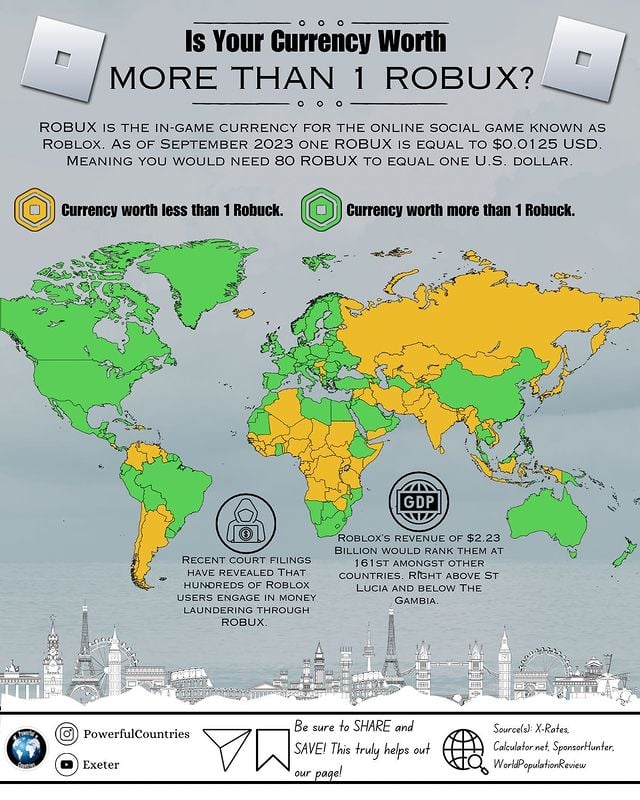this post was submitted on 18 Oct 2023
314 points (100.0% liked)
196
16501 readers
2363 users here now
Be sure to follow the rule before you head out.
Rule: You must post before you leave.
founded 1 year ago
MODERATORS
you are viewing a single comment's thread
view the rest of the comments
view the rest of the comments

This map is somewhay misleading, some countries use currency without decimals, making their currency worth effectively less. Take for example the euro, a cent (a one hundredth of an euro) is cerntainly worth less than a robux while an euro isn't. The same comparison with the japanese yen (efectively a cent) shows that robux is more valuable. The map should be how many robux can you buy with the minimum wage for example.
Because the EU doesn't use the cent, they use the Euro. A cent is a fraction of a euro.
The Yen is like that because they had hyperinflation for a while.
This comment really doesn't make sense.
The point of the comment is to point out the common misconception that the value of one [token of a currency] has anything to do with the strength of a currency. As described in the comment, the value of a singular token of a currency can be chosen arbitrarily.
This, of course, doesn't mean the map is factually incorrect.
But the value of a unit of currency being unrelated to the currency's strength had nothing to do with whether that currency has cents or not. That comment just used the wrong explanation to make a correct point.
Also the map isn't entirely useless, because what it does illustrate is currencies which likely suffered from high or hyper-inflation in the past (or are very old). Obviously, no government first issues a currency and says "... and so one loaf of bread is 10000 schmeckles". That's just impractical.
Of course this doesn't mean that then Japanese Yen is a bad currency, but it does make for an interesting historical point.
This, I don't think the map is incorrect, for me it would be more interesting to compare people's wealth than the arbitrary value of a token